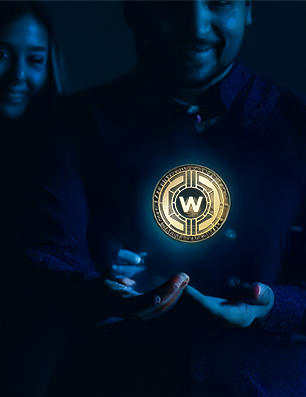- Written by: Ryan
- Sun, 01 May 2022
- Russian Federation
Binance is the most popular centralized exchange in the World and offers a myriad of staking opportunities for investors; here’s a full-fledged guide to staking on Binance. Covered: Benefits of Staking On Binance How To Use Binance Summary BNB Vault Locked Staking DeFi Staking Conclusions Benefits of Staking On Binance In order for this guide […] The post A Full Guide To Staking On Binance In 2022 appeared first on CryptosRus.
A Full Guide To Staking On Binance In 2022
Binance is the most popular centralized exchange in the World and offers a myriad of staking opportunities for investors; here’s a full-fledged guide to staking on Binance.
Covered:
- Benefits of Staking On Binance
- How To Use Binance Summary
- BNB Vault
- Locked Staking
- DeFi Staking
- Conclusions
Benefits of Staking On Binance
In order for this guide to be as clear as possible, keep in mind that the guide is referring to the international version of Binance; however, there will be notes wherever there are differences between Binance.US and the international platform, so read on!
Binance is the largest cryptocurrency centralized exchange in the World and is regarded as one of the most well-respected crypto platforms in general. They have a proven track record of being secure as well as caring about KYC compliance to governments.
Binance is not only an exchange where you can trade fiat for crypto, crypto for crypto, and view then prices, but they also have their own chain, NFT marketplace, and provide earning opportunities through staking. For this guide, we will focus on how to stake on Binance and the different opportunities for earning they offer their users
How To Use Binance Summary
If you haven’t used a centralized exchange yet, there are some typical processes you have to go through before being able to access all of the exchanges components (e.g., depositing fiat for crypto, swapping tokens, etc.). These steps involve registering an account, setting up KYC verification, setting up a bank account or credit/debit card with the exchange, and so on.
If you are unsure or confused on how to set up a Binance account, check out this guide for the international set up and this guide for how to use Binance.US. Once you have set up your account, you can return here to figure out how to get the most from staking on Binance!
BNB Vault
Let’s start out with how to natively stake Binance smart chains token, $BNB. In the dashboard, navigate to the “earn” section at the top of the menu and click on “BNB Vault” They don’t technically call this “staking” but instead call it “keeping your BNB coins in a vault”, which is essentially staking.
All you need to do is have some BNB in your spot wallet (by purchasing them through Binance), and then you can come to this page. At the top left hand corner is your estimated APY, and according to Binance, this number can fluctuate depending on various factors but can go up to 20%.
The middle of the page shows information regarding your BNB staking history, and there is also an option to automatically stake your BNB from your spot wallet every day, which is a good tool to take advantage of. This is pretty much it for staking BNB on Binance! The rewards are pretty good, and the process is user-friendly as well.
Locked Staking
To be clear, locked staking is available both on the international platform and Binance.US, but the tokens available to stake differ between the two. Currently, on Binance.US, users can only stake VET, XTZ, ATOM, EOS, ONE, and ALGO, while there are over 100 staking options on the international platform.
In the “earn” section (the same part as mentioned above), navigate to the “staking” part of the website, and it will automatically bring you to the Locked Staking page. Next, click on which asset you would like to stake, and Binance will pop up with a similar screen to this:
You can then pick an asset to “stake,” and there will be a summary of the entire staking period pop up with a few disclaimers and some more additional info. You will now have to choose how long you want your assets to be locked for, and the APY will adjust accordingly (with higher APYs for longer amounts of time keeping your assets locked). Once you confirm this, you are now staking your crypto and generating passive income!
DeFi Staking
For now, DeFi staking is only available on the international platform. However, that will probably change in the future.
The DeFi staking part of Binance’s website is located right next to the tab for locked staking, so it is pretty easy to navigate too. DeFi staking is a little more risky than locked staking on Binance because it is not insured, and they will not assume liability for any losses incurred due to project on-chain contract security issues. That being said, Binance strives to only provide the best DeFi mining projects for staking, and they currently only have 13 options to choose from.
You will notice it looks very similar to the “Locked Staking” page, but there is one big benefit. DeFi staking allows for a “flexible lock,” meaning that users will be able to withdraw their tokens whenever they want and still earn some APY.
Conclusions
So, what options for staking are best for you? It really just depends which projects you believe in and if you think the tradeoffs are worth it to move from locked staking to DeFi staking.
Staking is, without a doubt, a great and legitimate way to earn passive income for everyone. Binance offers a reliable and secure platform for staking, and if you are looking to stake your crypto, Binance is an industry leader, and you really can’t go wrong with the platform. One last thing to consider, if you are worried about the volatility of staking crypto assets, then go with a stablecoin option like $UST or $BUSD.
The post A Full Guide To Staking On Binance In 2022 appeared first on CryptosRus.






